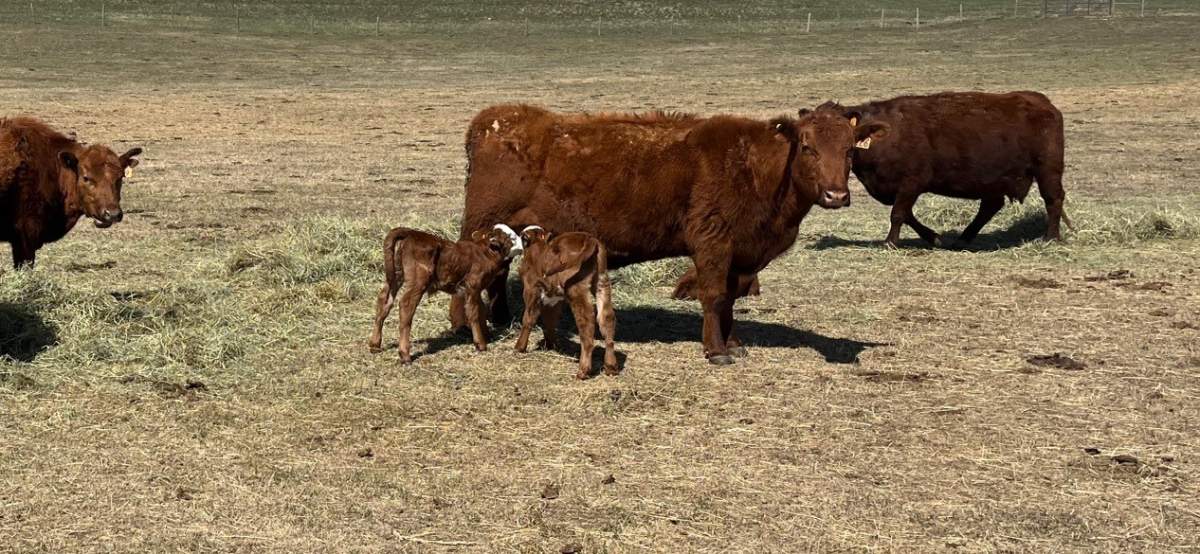Jennifer Maljaars with Mud Lake Ranch near Fort Macleod Alta., and her dad, Conrad Van Hierden with Hilltop Beef, are seeing double this year: 22 sets of twins have been born between their two ranches.

“With our herd about 150, 160 heads we usually get typically two, three, maybe four twins a year. After all said and done, we were at 11, and that’s just on the one herd. Then, on the second herd I think we are at 11 … 10, 11, 12 even maybe now,” said Maljaars.
More babies means more work as most moms of the multiples needing a little extra help.

Get daily National news
“Typically, they come in the barn or a smaller area, a confined area so she can bond with both of them. If you leave her out in the field she will take one and leave one — a lot of times they will need colostrum, they need extra attention, one usually does better than the other and you end up having to take one off because mom just doesn’t have enough milk, so then you are left with a bottle calf,” said Maljaars.
Van Hierden said they didn’t make any changes to their angus cross herd from last year, and used the same cows and the same bulls.
He added with a laugh, “I think its mother nature’s way of telling us we need more cattle or something!”
Twins are typically a little smaller and Van Hierden said that can be noticeable come sale time.
“The weaning weights are varied always on twin calves and if we leave both on a cow we usually keep them separate from the main herd so they don’t have to do as much travelling and feed them a little bit and watch them through the summer,” he added.
For Maljaars, the added work is all worth it.
“When you see those little babies be born and they are playing and jumping and kicking it takes your breath away. They are just absolutely so cute and I would do it every year no matter what.”
Calving is almost wrapped up on the ranch, but Maljaars added there is still a slight chance they could see another set of twins before the season is done.






Comments